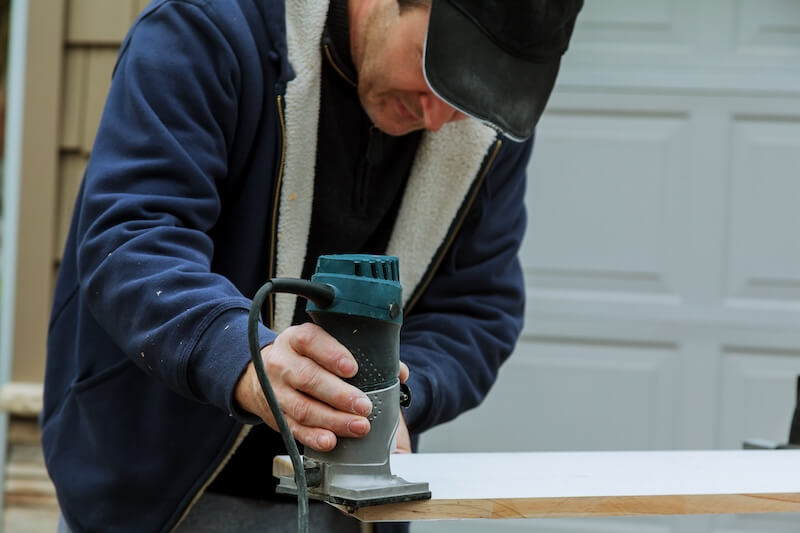What is a Wood Router?---
In its most basic form, a router is composed of two elements: a motor and a rotating spindle. A collet secures a router bit in the spindle, which then protrudes through a flat router base or table top to perform the cutting action.
Many would describe the router as one of the most versatile tools in the workshop. It is able to perform a myriad of accurately repeatable tasks such as creating grooves & dadoes, dovetails & tenons, edge shaping, forming raised panels, moldings & beadings, and pattern-following, just to name a few.A Brief History

Shaper by W. F. & John Barnes Co. (Source: http://vintagemachinery.org/)
“A machine for moulding edges of brackets, scroll work, panel work, regular and irregular mouldings of all styles…” – W.F. & John Barnes Co.
W.F. & John Barnes Co. debuted the first mechanical router in 1877, which somewhat resembles an exercise bike with a dinner tray; here, you have to pedal for your pie. In what one can only imagine to be a fantastic aerobic workout, the operator keeps the spindle spinning from forty to forty-five hundred rpm. Speeds depending on whether or not you had a good night’s rest, of course.
It wasn’t until 1906 that George Kelley of the Kelley Electric Machine Company patented the first electric handheld router. At an epic 27kg, would you prefer leg day on the router-bike or arm day lugging this beast atop your timber? Probably a combination of both – never skip leg day (I hear from people who actually go to a gym).
The Different Types of Wood Routers
Routers can be broken down into three basic categories: handheld routers, router tables and CNC routers. Handheld routers further diverge between fixed-base and plunge-base routers.
Handheld Routers

The fixed-base handheld router is the simplest of the lot. The router bit protrudes past the flat base to engage with the workpiece. The bit should come in from the side of the workpiece once the motor is turned on.

By contrast, the plunge router allows the router to be placed on top of the work and for the bit to be plunged down into the workpiece. Many modern routers are a combination of these two types, allowing them to be used either as a fixed-base or plunge router as needed.
Router Tables

Say you’ve got a plunge router, you love routing, but golly wouldn’t it be easier to run the timber over the router, rather than the router over the timber? Well, turn that puppy upside down, mount it under a bench top with an opening for the spindle and BAM! You now have a router table. And that is actually one popular way to set up a router table; especially useful if you already own a handheld unit.
Today, there are many router table kits available, often including their own round-body motor sitting in a cradle on the underside. The workpiece is supported on the table top and runs along the bit with ease, often with aids such as a fences or featherboards. Gone is the need to secure the workpiece with clamps, and constantly readjust when they get in the way. Simples!
CNC Routers
A CNC router, or Computer Numerical Control router, is the final boss of routing, combining features found in all of the above. It carves and cuts from above the workpiece, based off computer generated coordinates input from 2D or 3D digital drawings. The material is placed on a large work bed while a mechanical arm moves on a gantry system smoothly cross the X and Y axes, lowering the rotating spindle on the Z axis to make the cut.

It’s funny, looking back on the pedal-powered origins of the router, and similar early woodworking machinery – our kinetic output motored the route to our ambitions. Today, the mechanical arm of the CNC replicates the human arm and a handheld router, seemingly raising us one better – despite the method, the scope of creation is as limitless as ever.


